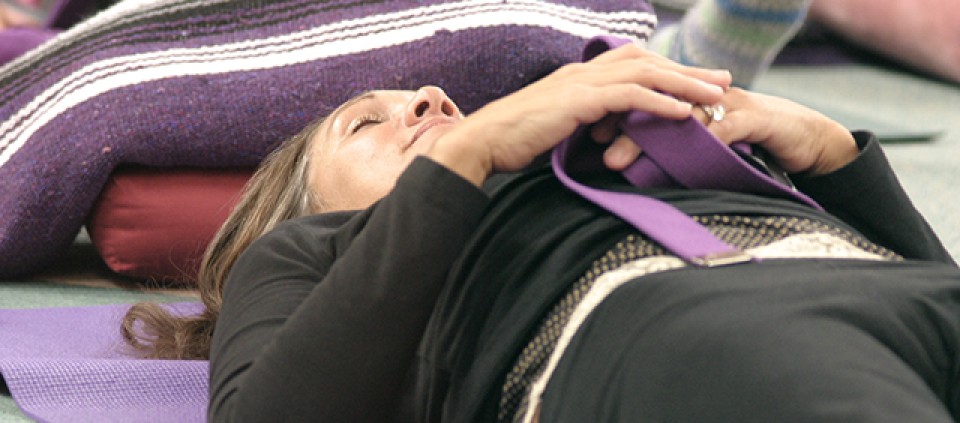The Benefits of Gentle Yoga

In this Q&A, Rudy Peirce, a Kripalu Yoga teacher since 1983 and creator of The Gentle Series CD set, discusses the benefits of gentle yoga.
What populations might benefit most from gentle yoga?
Lots of people—it’s not limited by age or ability. There are teenagers who practice gentle yoga as well as folks in their 80s. It’s a question of what appeals to you and what works for your body. Gentle yoga tends to be a slow and relaxing practice, and some people are drawn to that, while others are drawn to a vigorous, fast-paced practice.
I particularly recommend gentle yoga for people who are stiff and out of shape, because it’s a slower practice that focuses on making it easier to get into postures. It can also be helpful for people recovering from injuries or surgery, or who have joint replacements and need to explore postures slowly and carefully.
Do you find that gentle yoga is actually more challenging than vigorous practice for some people, because it’s more meditative?
For many people, it’s about which style of yoga is going to hold your attention and “entertain” the mind so that you can stay in the present moment. Vigorous, fast-paced yoga can hold the attention because there’s a lot of stimulus. A slow-paced yoga practice can also engage the mind if there is continual encouragement to pay attention to the sensations of moving and breathing. Different people require different approaches to focusing the mind, but most of us need encouragement to pay attention to what’s happening in the body. A yoga practice needs to be something people enjoy physically, but it has to engage the mind as well in order to be a full experience.
I’ve begun to use the term “dynamic gentle yoga” to distinguish this practice from simply an “easy” yoga practice. Gentle yoga might not be as physically demanding, but it offers all the transformative benefits that people look to yoga for.
What are the specific benefits that gentle yoga offers? Are they different from the benefits of yoga in general?
Like other styles of yoga, gentle yoga relieves stress, increases flexibility, calms the mind, and strengthens the body. Gentle yoga, in particular, can be relaxing and help enhance range of motion. And, of course, a big benefit is that it’s accessible to people who can’t do a practice that requires a lot of flexibility and strength.
In gentle yoga, the movement is slow, each movement is linked with breath, and we enter into the postures gradually—moving in and out of each pose first, and then finding a holding position. This preparation and fluid entry into postures protects and nurtures the joints, muscles, and connective tissue. With dynamic gentle yoga, you explore your pain-free range of motion and find your edge, so you can come safely and comfortably into the pose, depending on what’s right for your body on any given day.
How does gentle yoga support digestion and sleep?
Gentle yoga is particularly good for balancing digestive difficulties because its slow, rhythmic movement soothes and relaxes the nervous system. Done regularly, it can also improve sleep patterns. When I teach gentle yoga with yoga nidra, in particular, it has a huge impact on sleep—I’ve found that it can reduce and even cure insomnia.
Find out about programs with Rudy Peirce at Kripalu.
© Kripalu Center for Yoga & Health. All rights reserved. To request permission to reprint, please e-mail editor@kripalu.org.